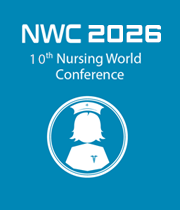Title : Situational diagnosis of security incidents in Brazilian Health Organizations
Abstract:
The Brazilian Patient Safety Program (PBSP) from Health Services Accreditation (IQG) has monitored reports of diagnostic safety incidents to propose strategies for reducing harm in patients. As of March 2017, the conceptual framework of the International Classification of Patient Safety of the World Health Organization (WHO) was adopted for the reporting and analysis of notifications. Thus, considering the use of standardized concepts on safety in health care, this study was carried out to characterize the situational profile and propose strategies to reduce damages related to health care. The main objective is to identify and characterize the safety incidents profile of the Health Care System participants Classification about the Patient Safety of the World Health System.
A descriptive study on the safety incidents of 140 PBSP health organizations observed from March to December 2017, voluntarily notified by organizations in all regions of Brazil, was carried out retrospectively. The notifications were made in the standardized link and made available by the PBSP website.
A total of 8,166 security incidents were collected, of which 2135 (26.5%) were from the Midwest, 4996 (61.6%) from the Northeast, 41 (0.5%) from the North, 700 (8.6%) from the Southeast and 226 (2.8%) from the South of the country.
Of the total, 3105 (38.3%) incidents were classified as Clinical Procedure, 2507 (30.9%) as Medication and Intravenous Fluids and 2504 (30.8%) distributed in the other classifications as infection associated with health care and accidents with the patient, among others.
In the classification Clinical Procedure the main incidents were related to treatment, intervention, general care and case management, with 81.7% of the problems classified as incomplete or inadequate.
In the incidents with medication and intravenous fluids, the main failures were related to the prescription, administration and supply of medications, 39.9% of the problems were related to the wrong dose and frequency, 24.9% dose or omitted medication and 24.3% wrong drug.
The non-critical hospitalization units were the sites with the highest prevalence of incidents (39.2%), followed by the Adult Intensive Care Units (23.7%), Emergency (10.7%), Surgical Center (6.6%), Image Service (6.7%) and other assistance units (13.2%).
In total, 105 preventable deaths were reported and analyzed separately. The classifications of the incidents most frequently observed in the deaths were Clinical Procedure (59.0%) and medication and intravenous fluids (7.8%).
Therefore, the PBSP will support and propose to the participating organizations the development of strategies for the valorization of vital signs and care management, seeking the improvement in the systematization of the assistance in order to minimize incidents related to treatment, intervention, general care and case management.
For incidents of medication and Intravenous fluids considering the Global Patient Safety Challenge on Medication Safety WHO initiative, PBSP has the purpose of validating tool for drug risk identification and propose strategies to reduce drug damage caused by improving the practices in technical analysis of prescription, distribution and administration steps.
Audience Take Away:
- Event monitoring will indicate workflows that can be redesigned.
- The study of the incidents can indicate how much the model chosen for the management of nursing care is aligned with the risk profile and severity of the patients attended.
- The analysis of the incidents leads to reflection on the organizational resources, if they are adequate to ensure safety at all steps related to the drug chain.
- Encourage institutions to review the flow of the drug chain with clear definition of the roles and responsibilities of all involved.
- To stimulate the training of nursing professionals in the interpretation of vital signs and development of clinical reasoning.



